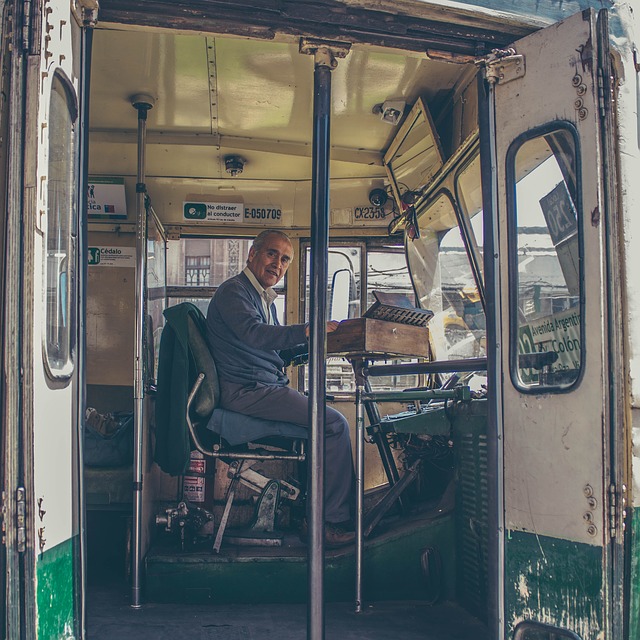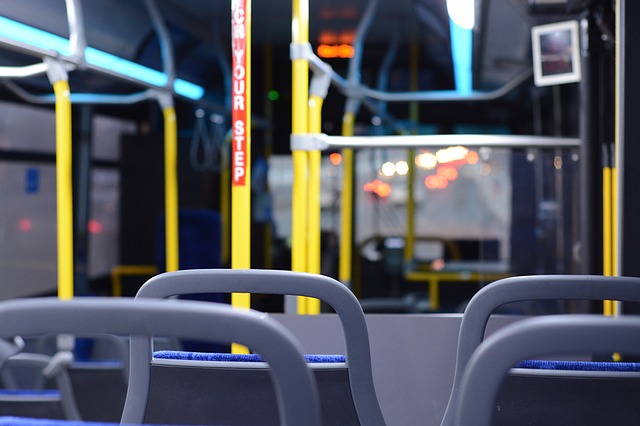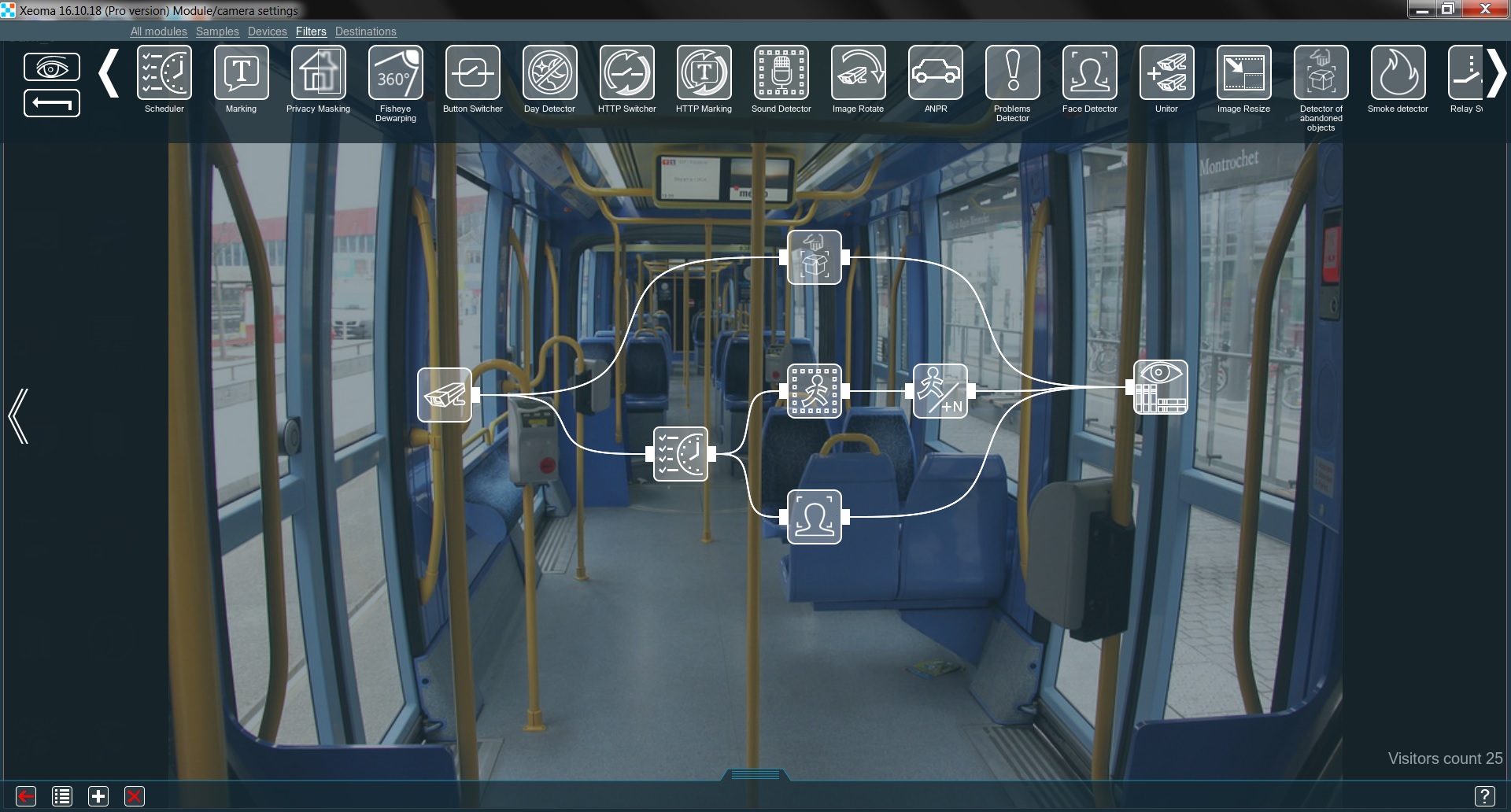Bus Surveillance
While people tend to feel relatively secure in their homes, being outside always poses certain risks. Thus, using public places to move from point A to point B makes them feel uneasy at best. Since video surveillance was created for the purpose of reassuring people of their safety, the obvious question to ask is “How can we be safe en route?” This article will take a closer look at how video surveillance can be applied to buses. All aboard!

|
Read also: Xeoma in CCTV on board a vehicle (PDF) |

First of all, there is an important distinction to be made. Cameras installed inside buses aim to protect 2 things.
The passengers are an obvious #1 on that list – by monitoring their activity the bus drivers can always make sure that everything is in order and take action if it isn’t. When something happens and the driver has to file a detailed report, the appended footage will serve as an irrefutable proof.
However, the cameras serve to protect the drivers as well. They are often blamed for the accidents that happen to buses, yet they are not always at fault. Witnesses’ testimony can be contradictory and misleading (mostly due to the fact that accidents tend to be fast), while video footage impartially shows everything that happened.

A very special type of buses that is particularly important for video surveillance is school buses. These are usually entrusted to the most experienced drivers, yet better safe than sorry. Cameras are needed to make sure that the speed limit is never exceeded or seat belts are never ignored. And, of course, there is always the problem of maintaining order inside. It is hardly any surprise that a considerable number of children can be a rather chaotic crowd, which makes a dangerous combination with a moving vehicle. While a certain degree of freedom is necessary, their behavior requires constant control – a task that also falls on the driver’s shoulders. They, of course, don’t have the luxury of constantly turning around to check whether everything is OK. This is where cameras serve as an extra pair of eyes (or “unblinking eyes”, as they are nicknamed), since a small monitor with live feed can be easily put anywhere in the driver’s field of vision.

However, there is also a controversy to address. Modern security cameras often provide audio feed to go with the video. While video surveillance is widely accepted, audio surveillance tends to step on many a toe. Many argue that video feed is more than enough to control or analyze the situation inside a bus, and thus, audio surveillance is an unnecessary breach of privacy and a blatant violation of human rights. Others (e.g. police force) claim that sound may be invaluable under certain circumstances: the police once identified and apprehended a criminal by noting their street name uttered in a bus. Moreover, audio recordings can help in dealing with disputes between bus drivers and passengers, in identifying the party at fault. The issue is still under scrutiny, a proposed solution to it is to charge the bus drivers with turning sound recording on and off when necessary. Unfortunately, this adds to an already significant list of duties the drivers have to perform, making this solution suboptimal at best. Audio surveillance in buses remains an unresolved issue.
And now let’s take a look at how bus surveillance can be managed through Xeoma. The doors are a good place to start. In order to have comprehensive security, we can use a chain like this:

Here the “Detector of abandoned objects” constantly scans the area for anything suspicious and keeps its findings in the Archive. The “Scheduler” makes sure that the other modules are enabled during the work hours, including the “Visitors Counter” (which requires a “Motion Detector” as well). The “Face Detector” is there to keep a more extensive record of the passengers. They, of course, too store all their records in the Archive, so that everything can be easily accessed any time.
Now there is the aisle to consider. The cameras overlooking it may have chains like this:

The camera stores the footage in the archive only during the work hours (the “Scheduler” helps with that). However, during rush hours buses can get rather packed, which, in turn, puts the camera at risk. Even those, who do not wish to vandalize security systems, at times do so on accident. Needless to say, we need to know that the camera is no longer functional right away. That is why the chain also features the “Problems Detector” (it will spot the lack of live feed the moment it disappears) and the “SMS Sending” (it will notify us once the detector sends the signal).
November, 10 2016
Read also:
How to make device lists?
Fisheye Dewarping